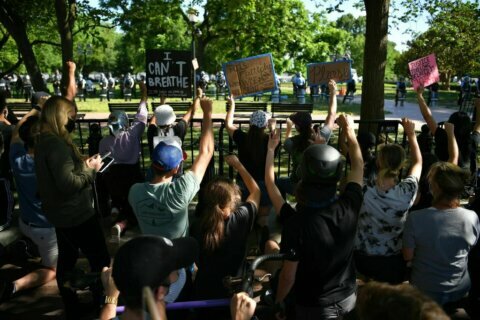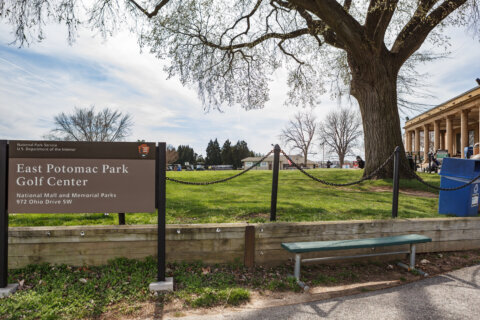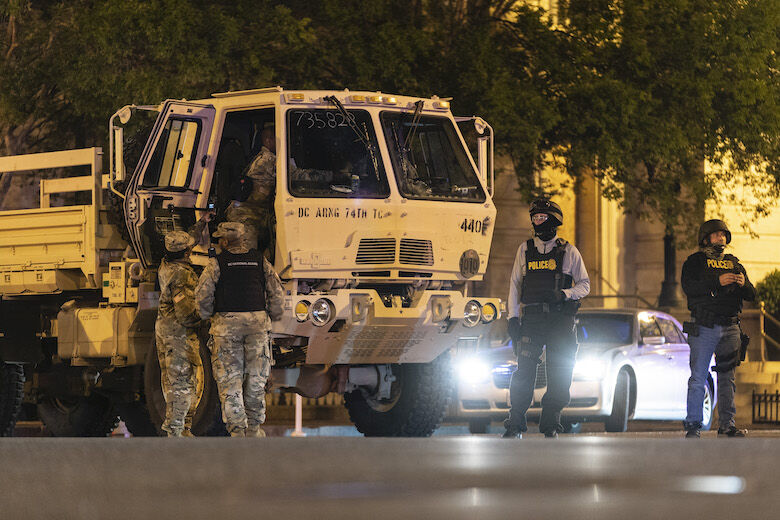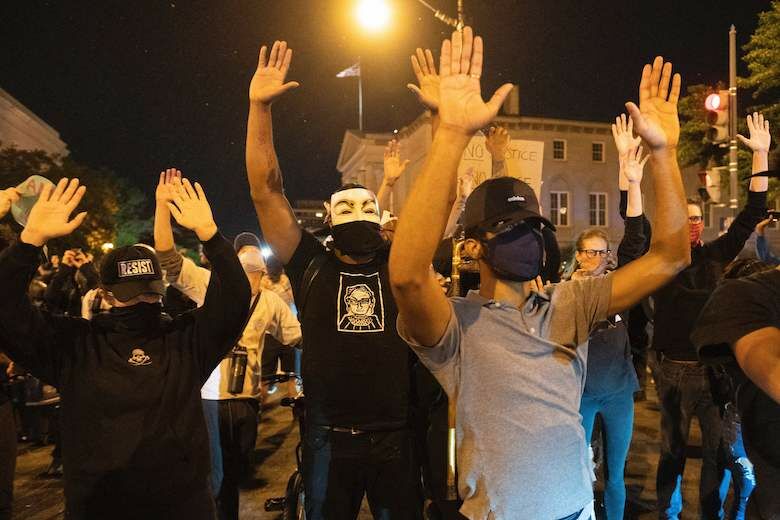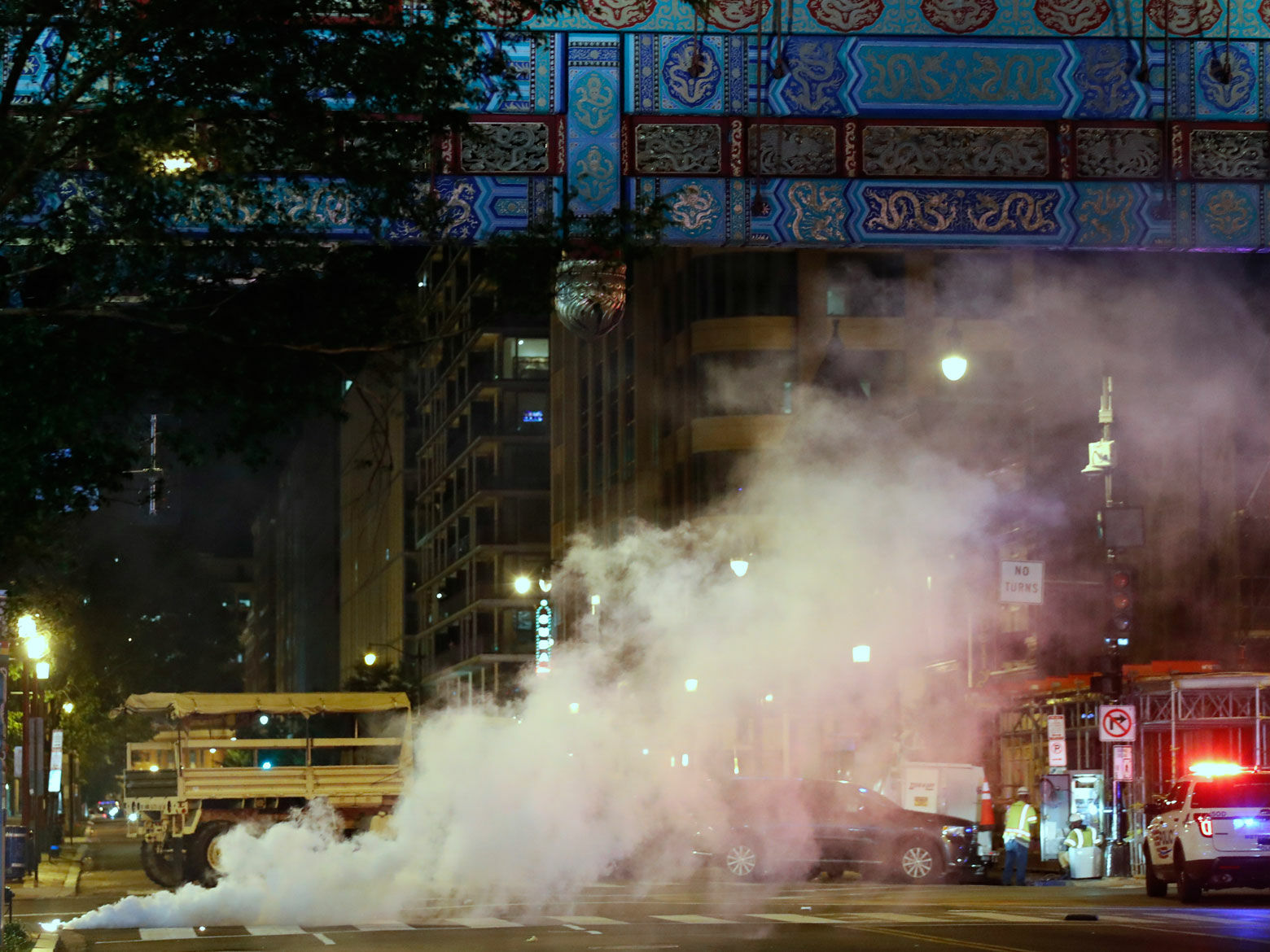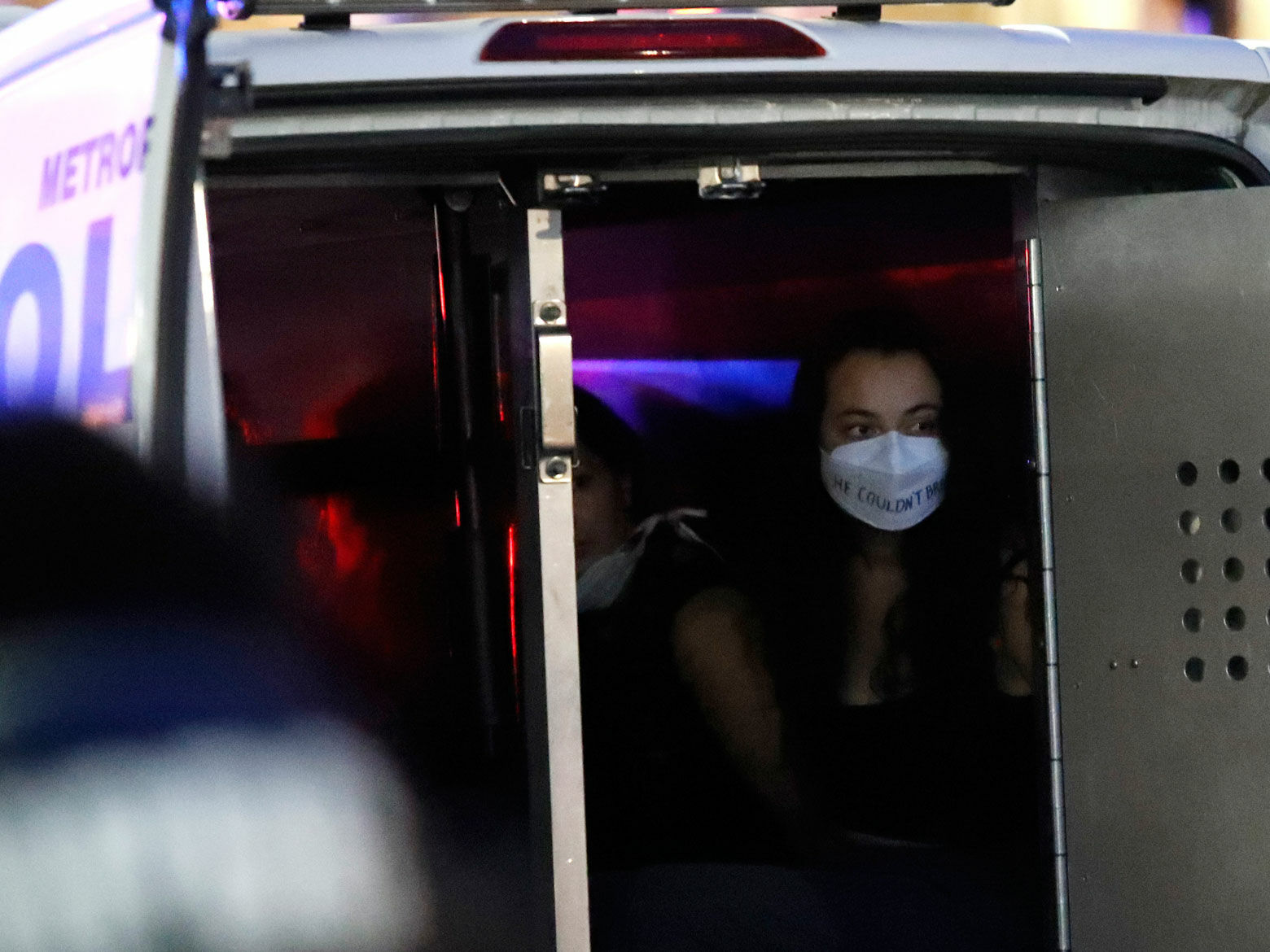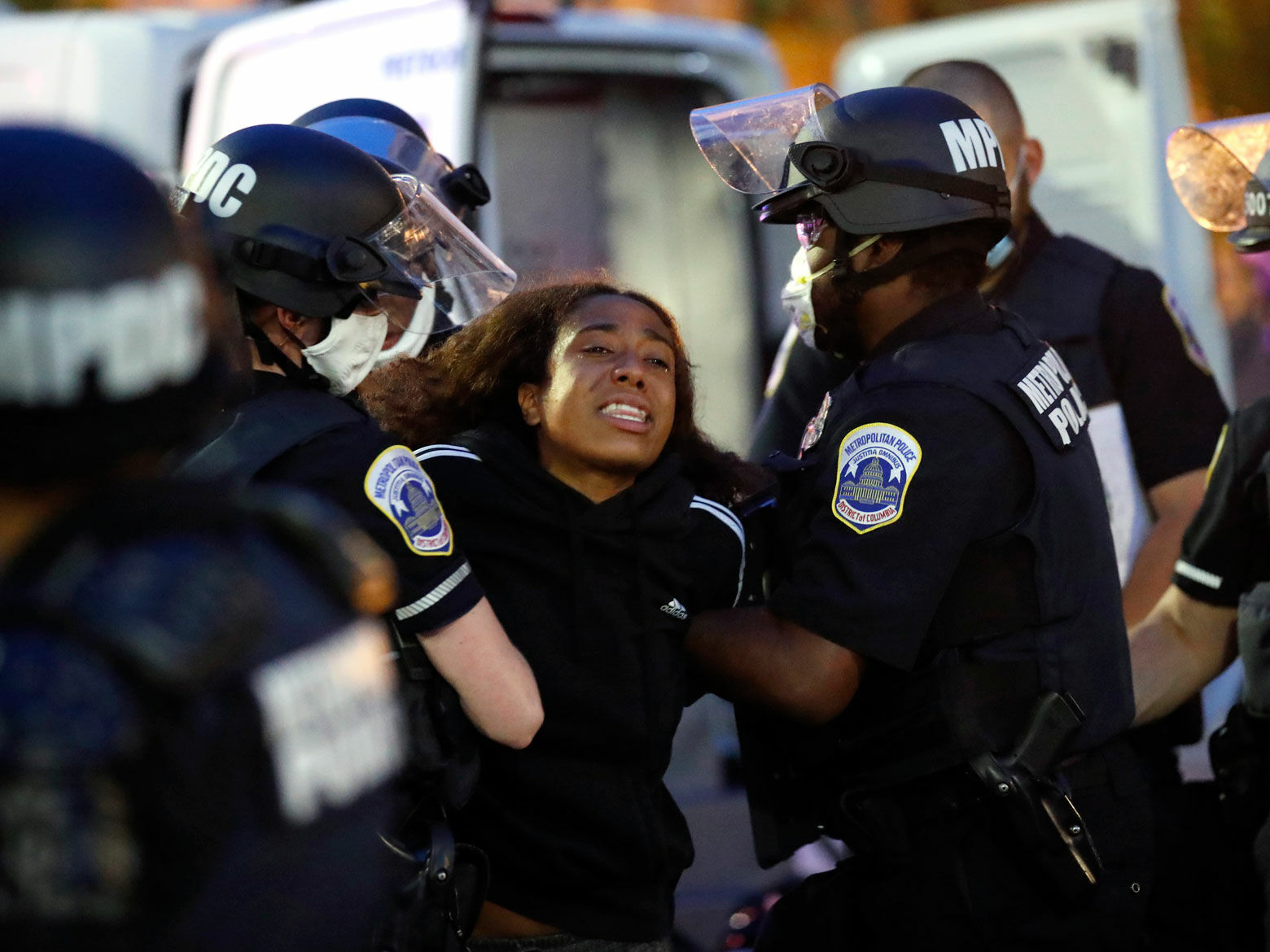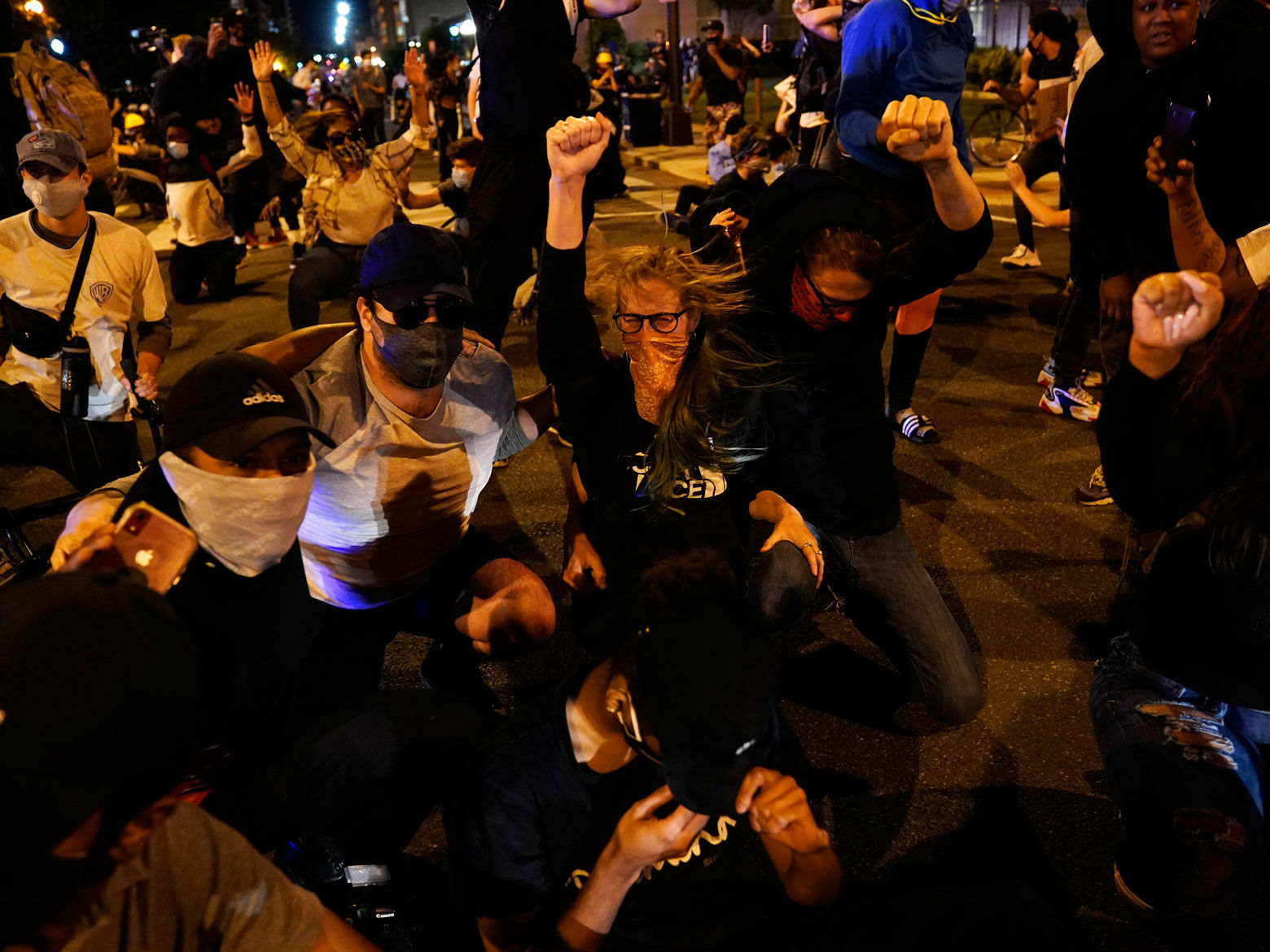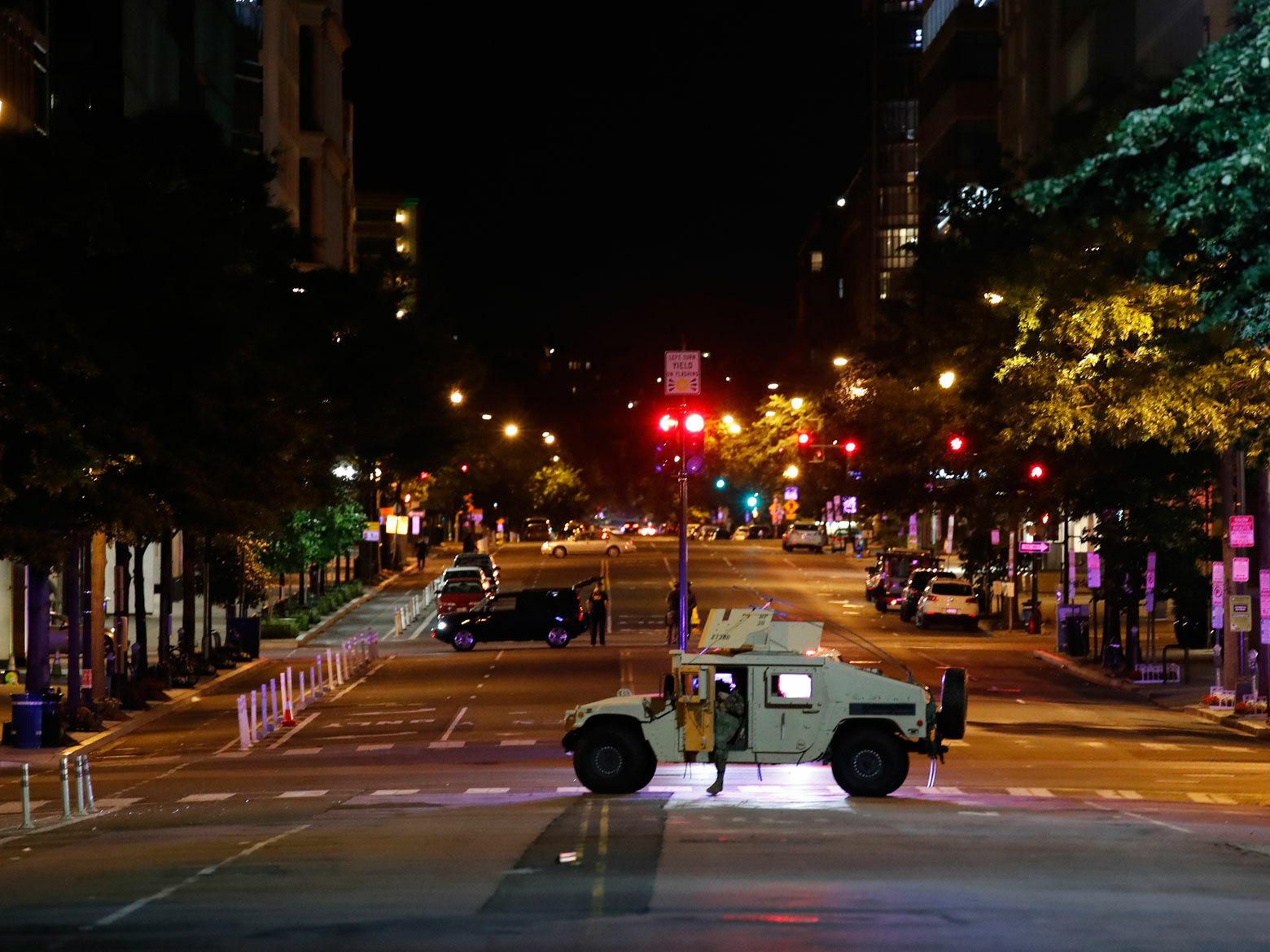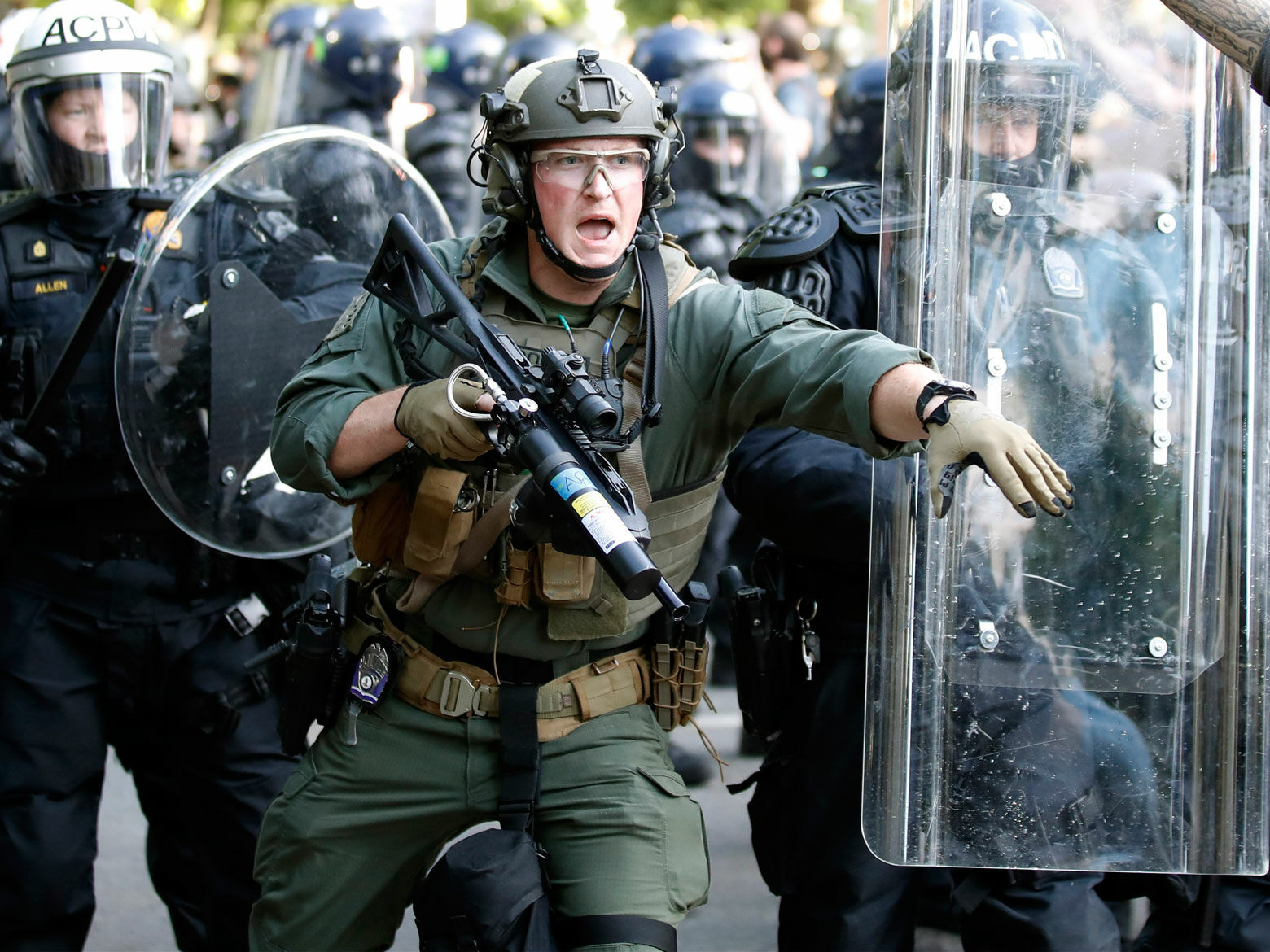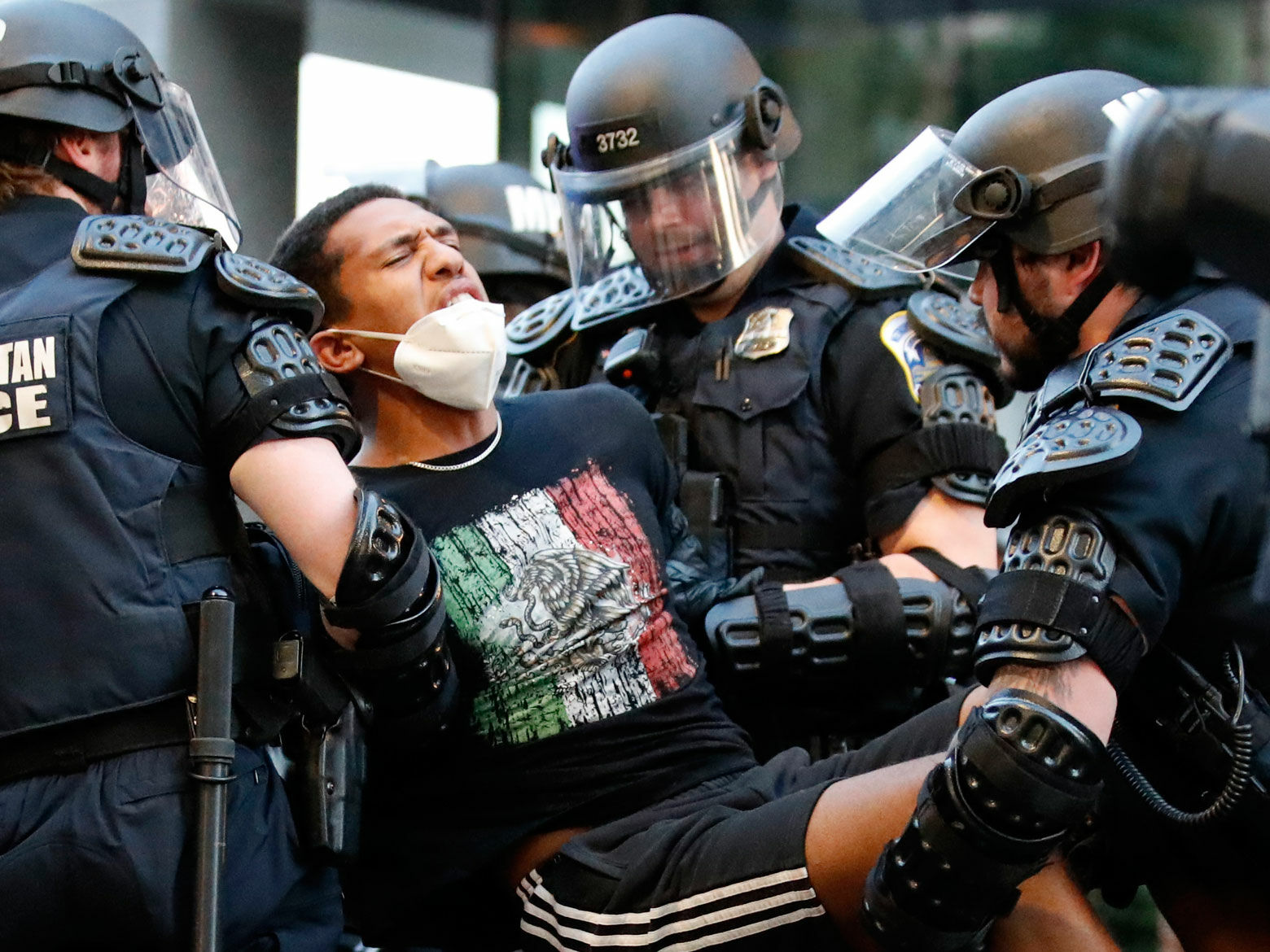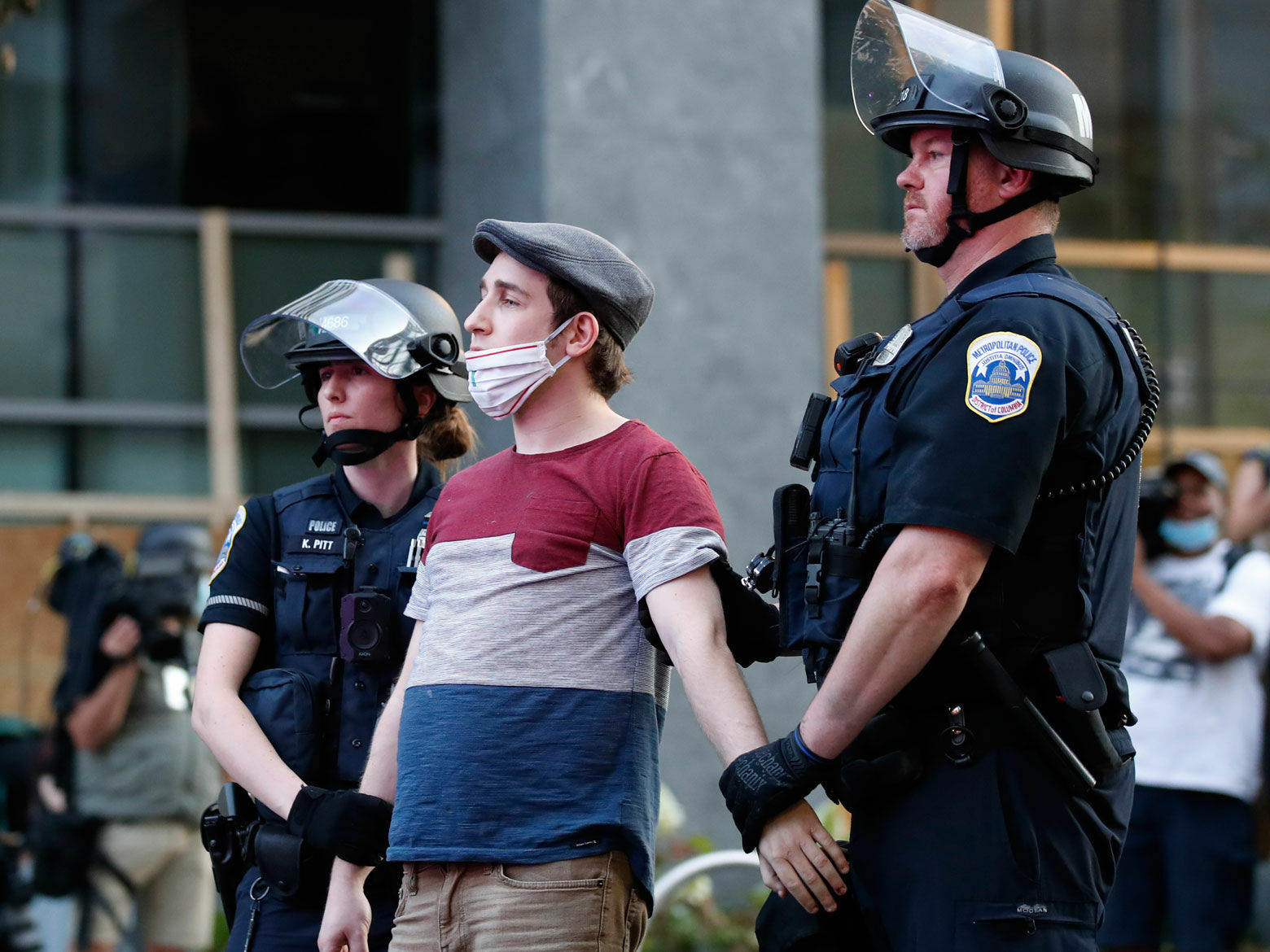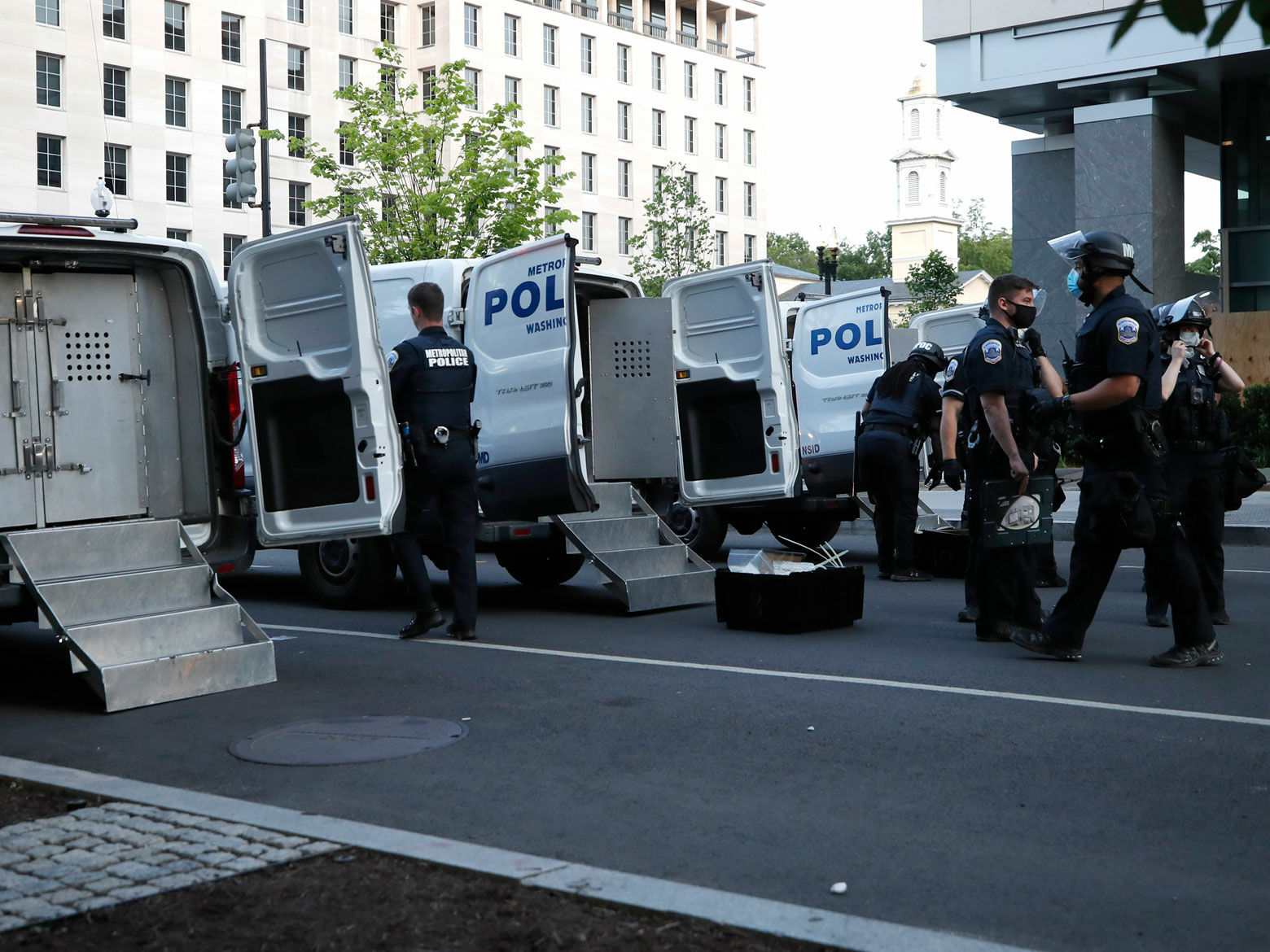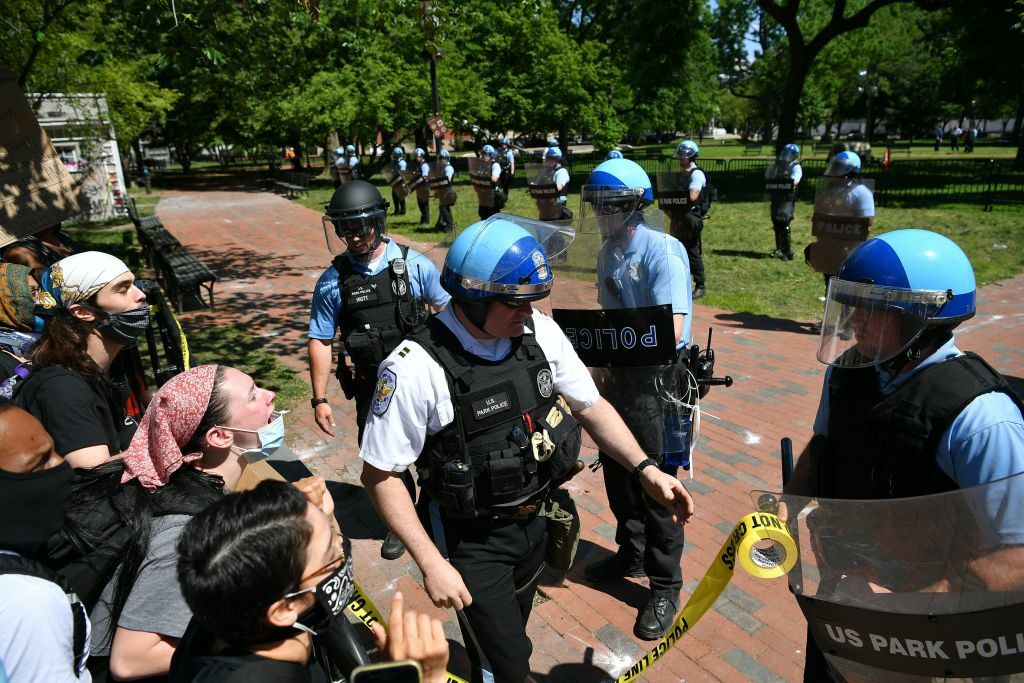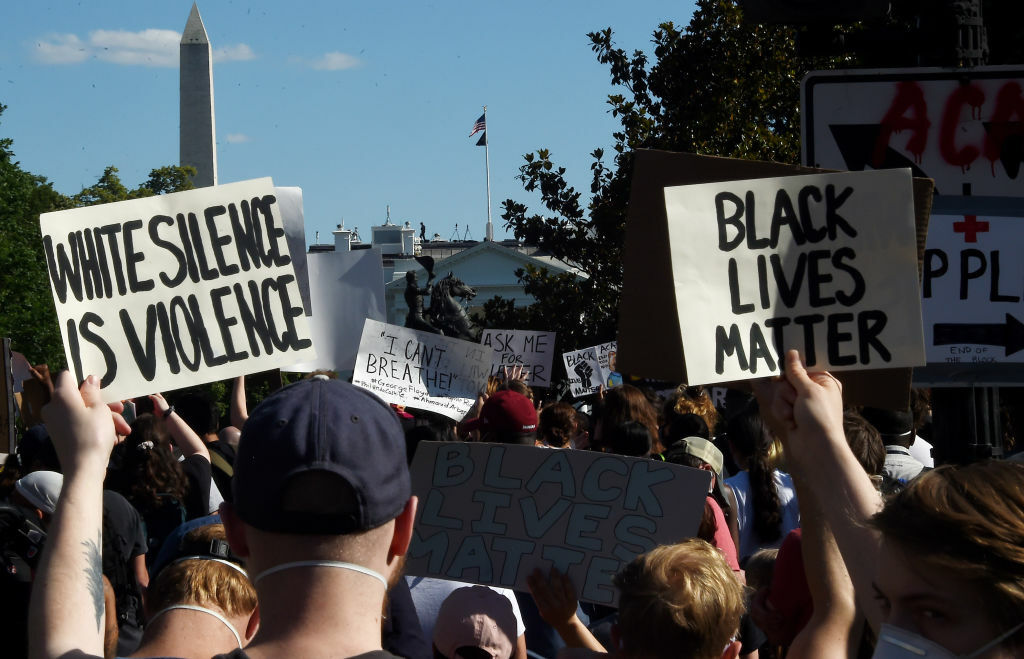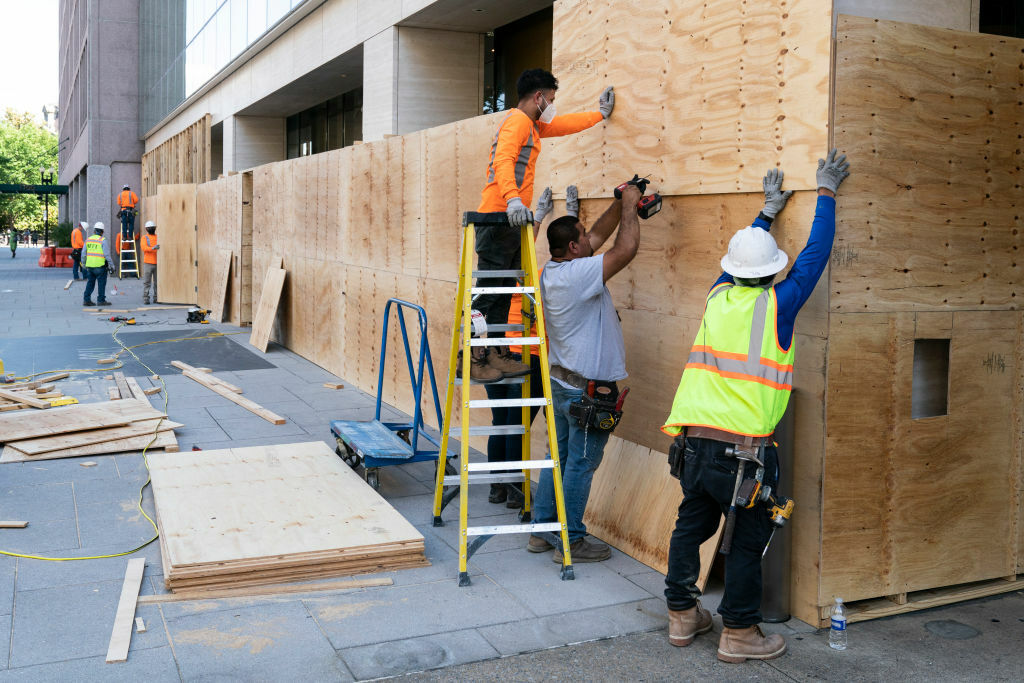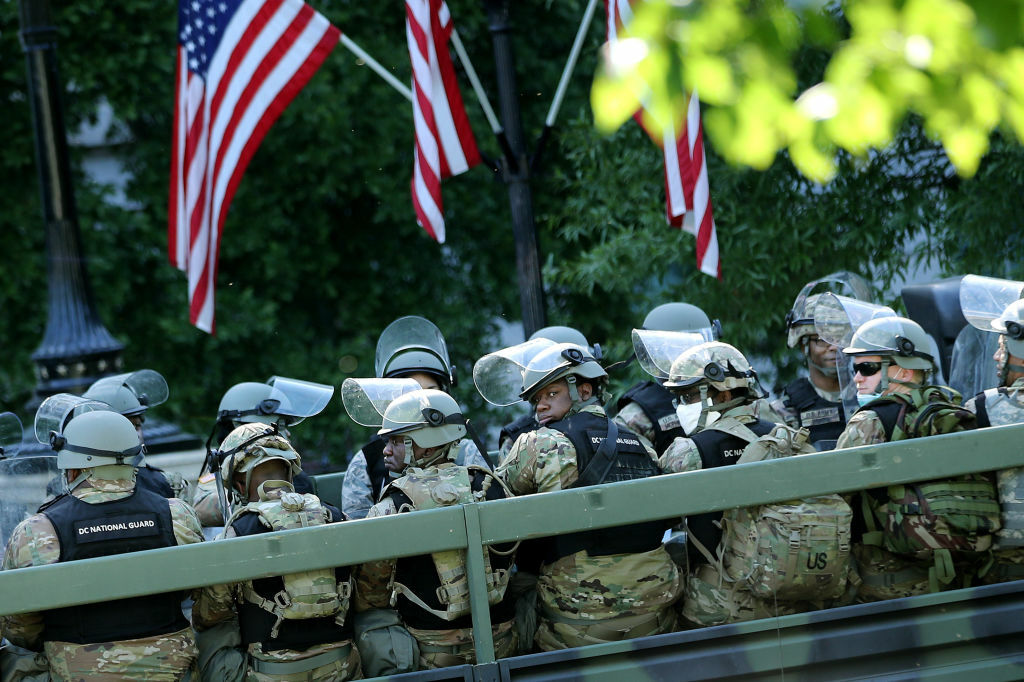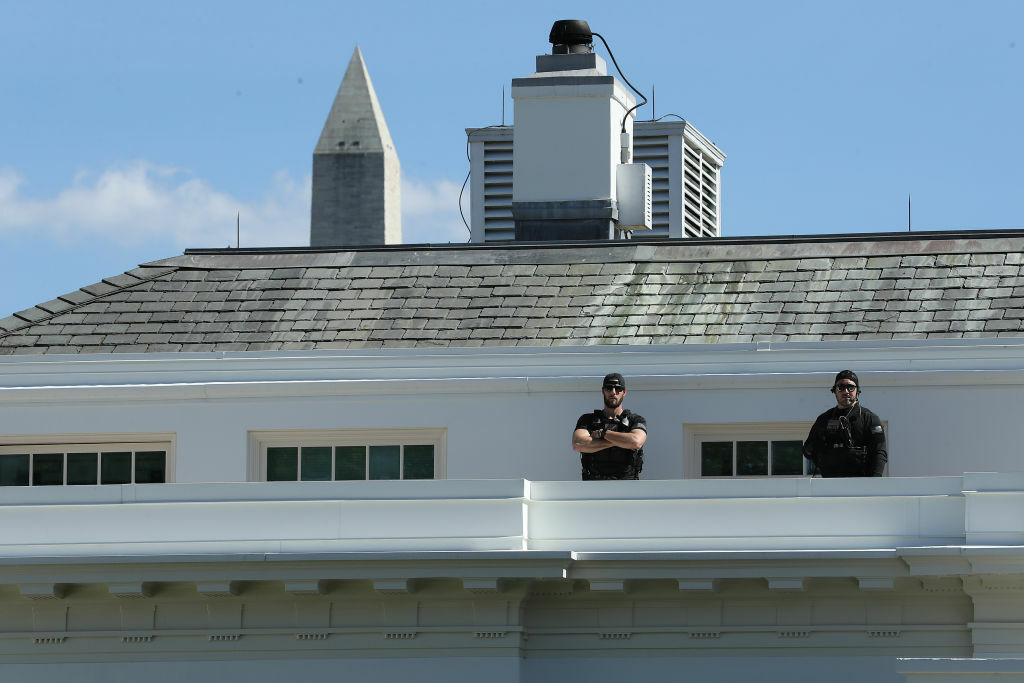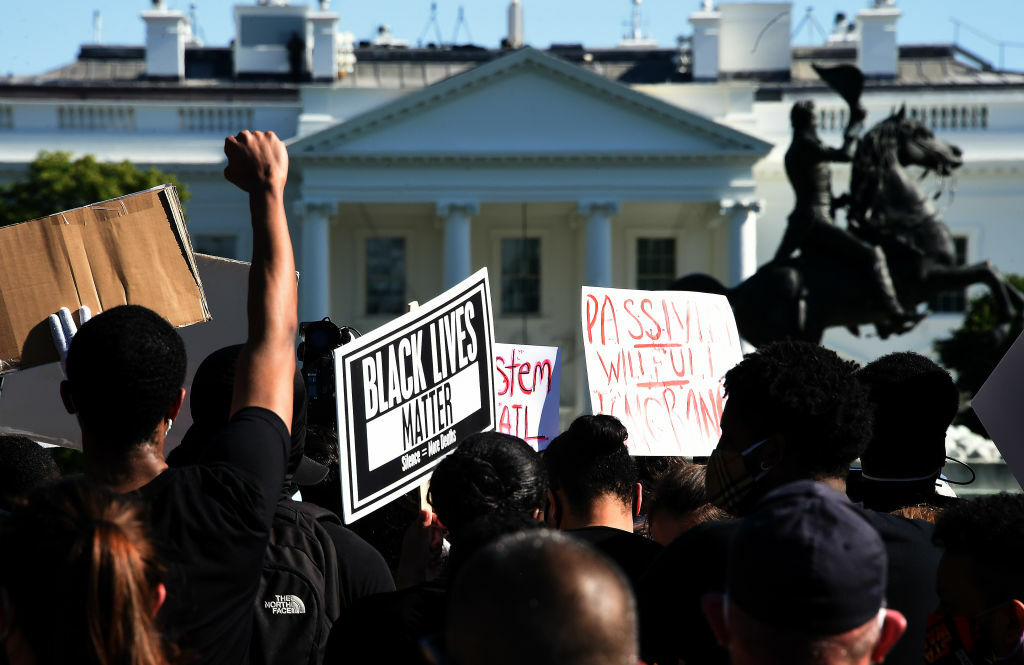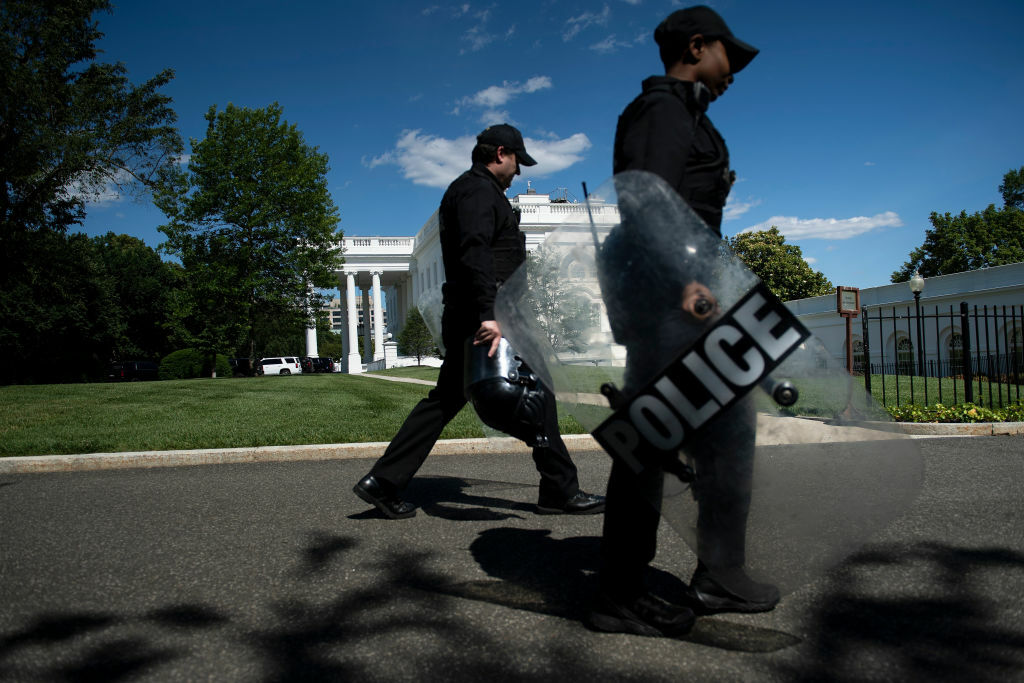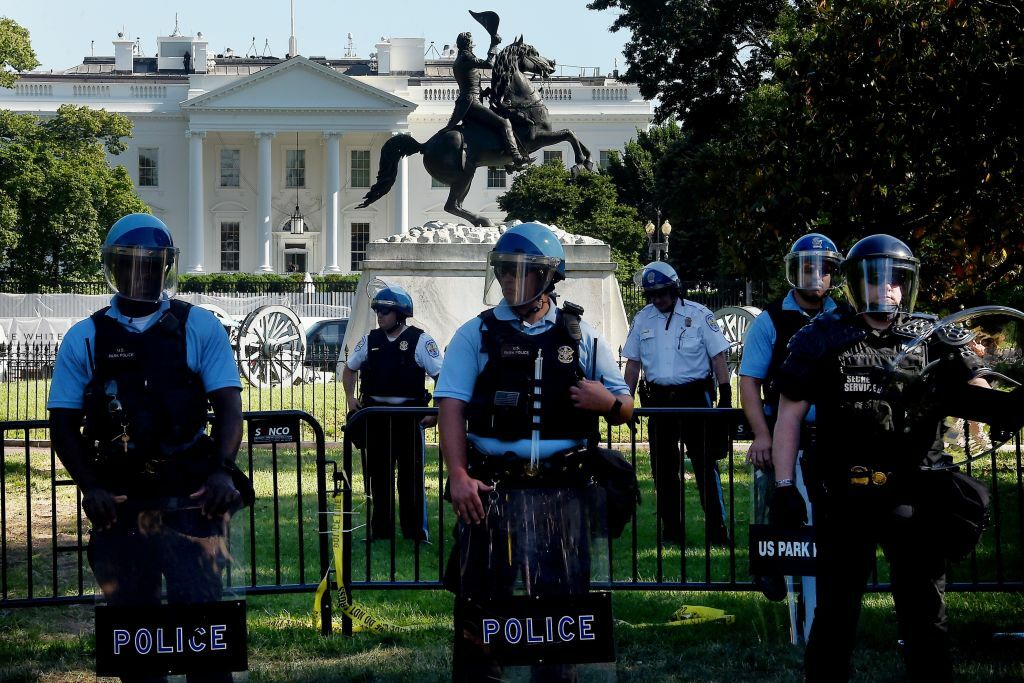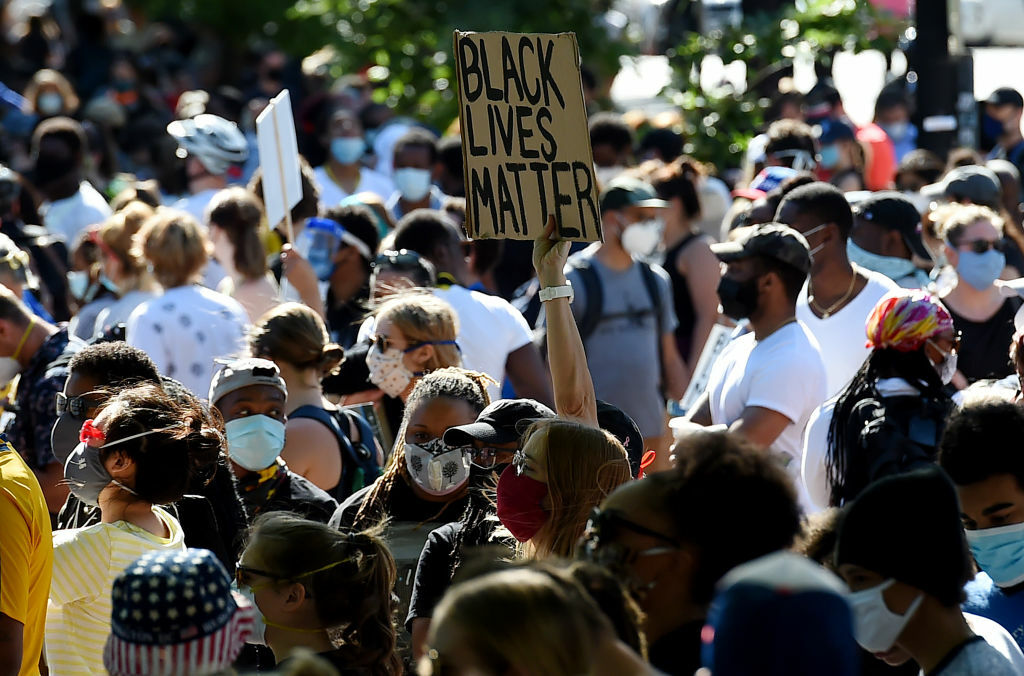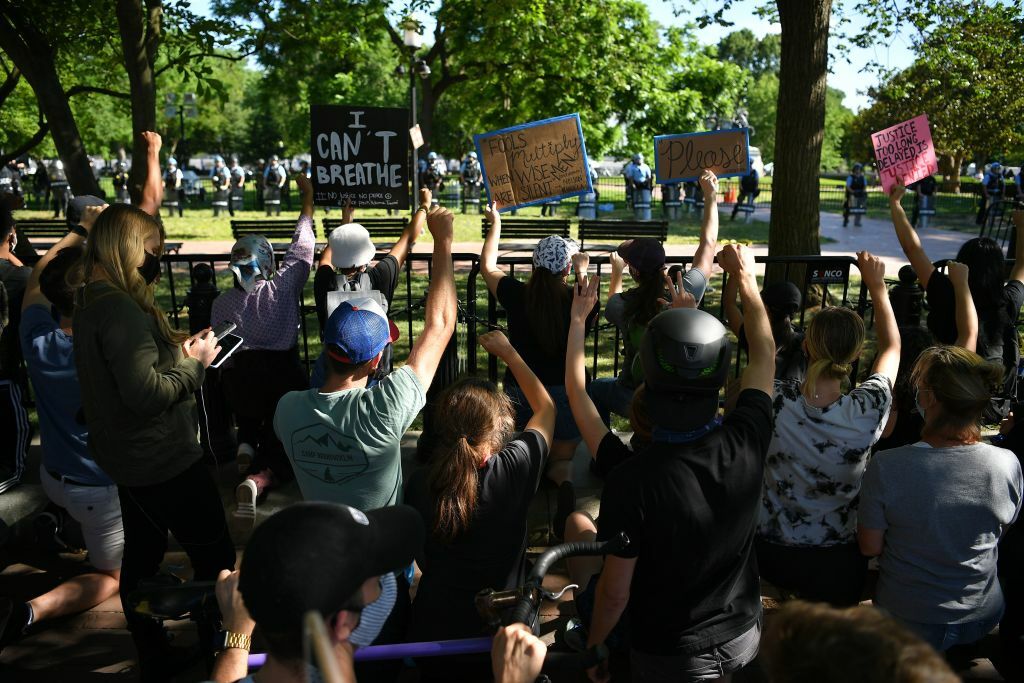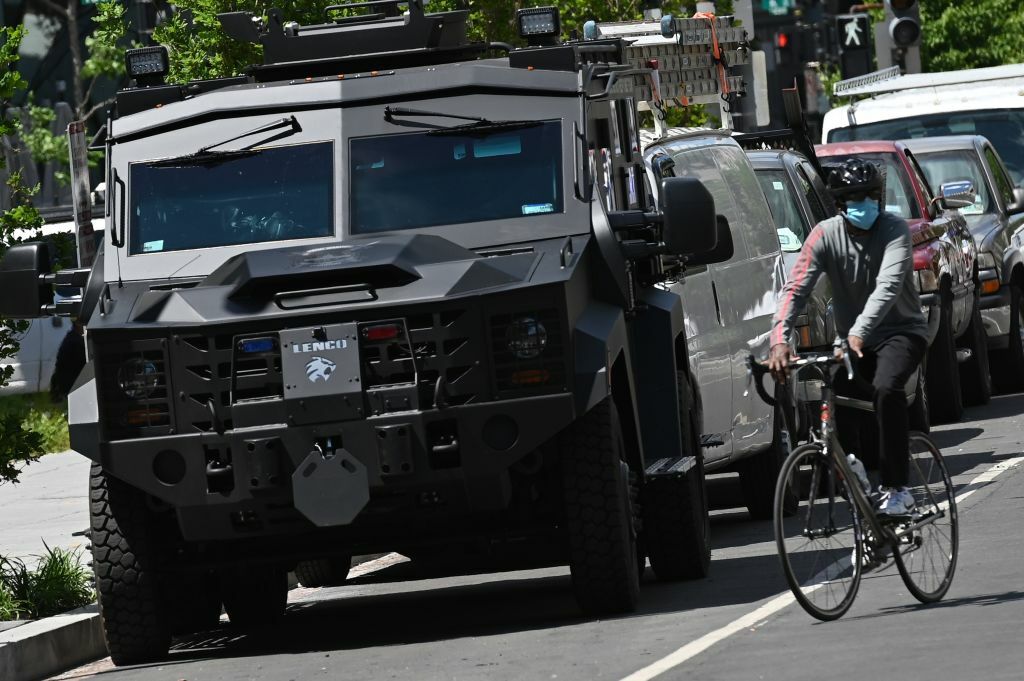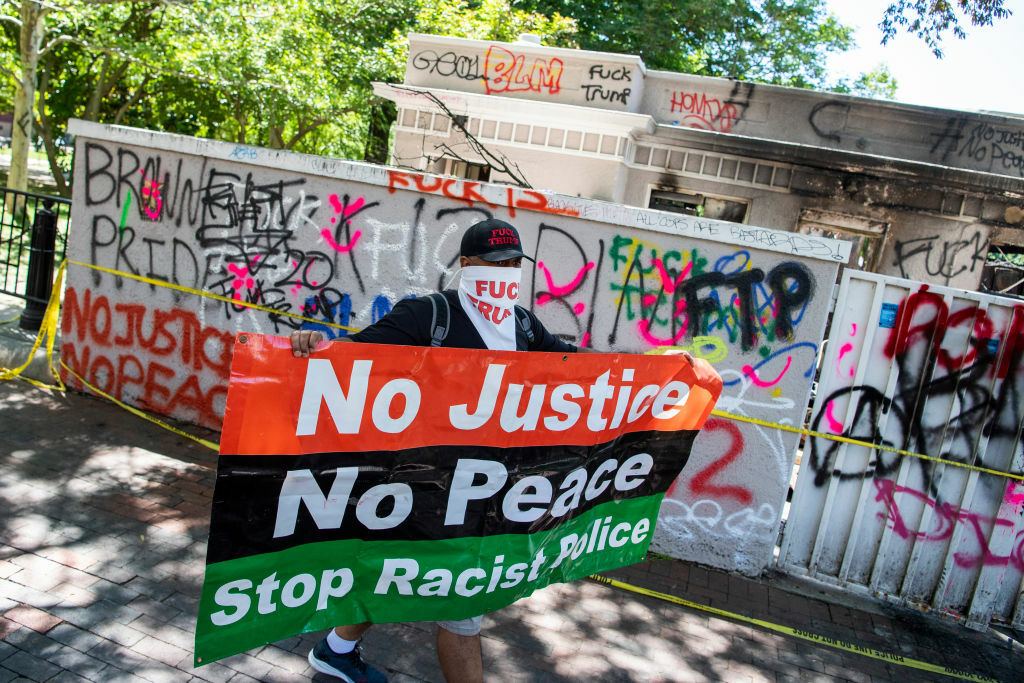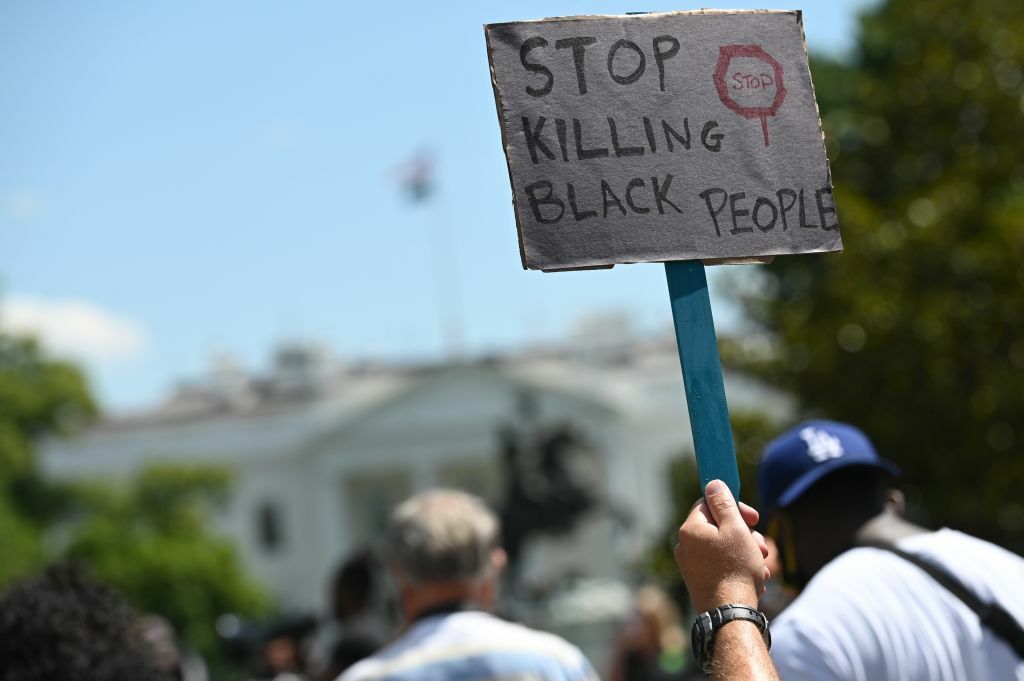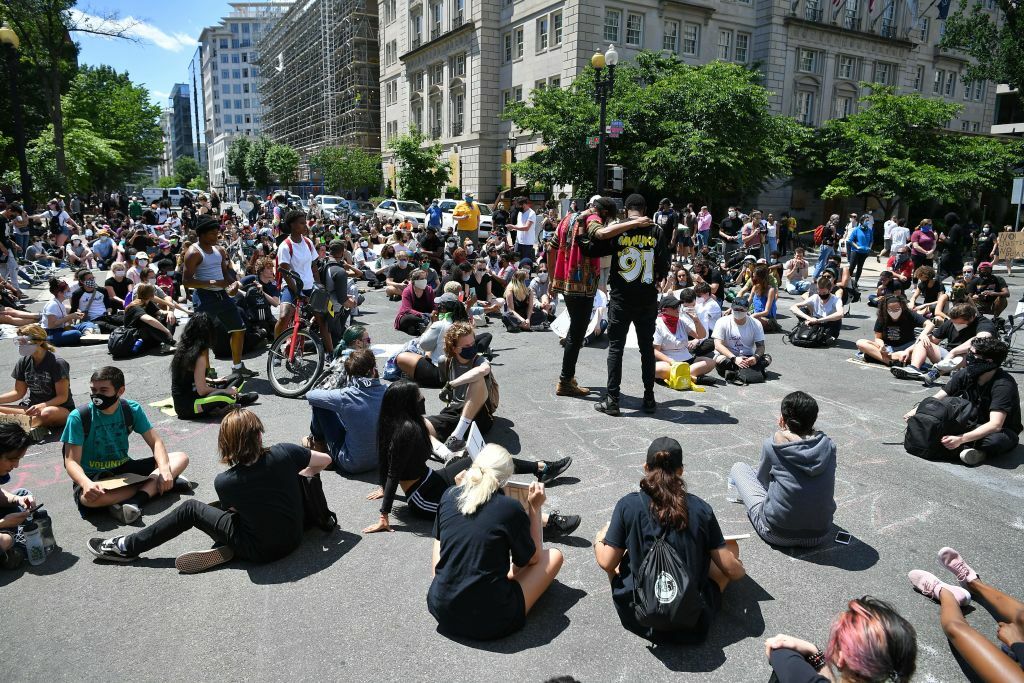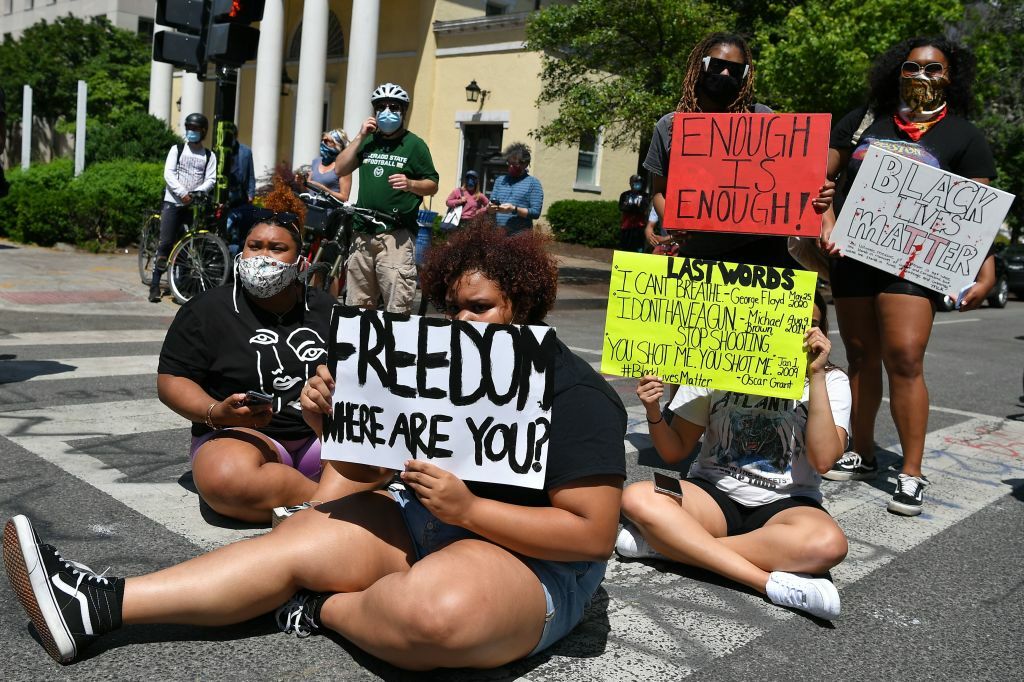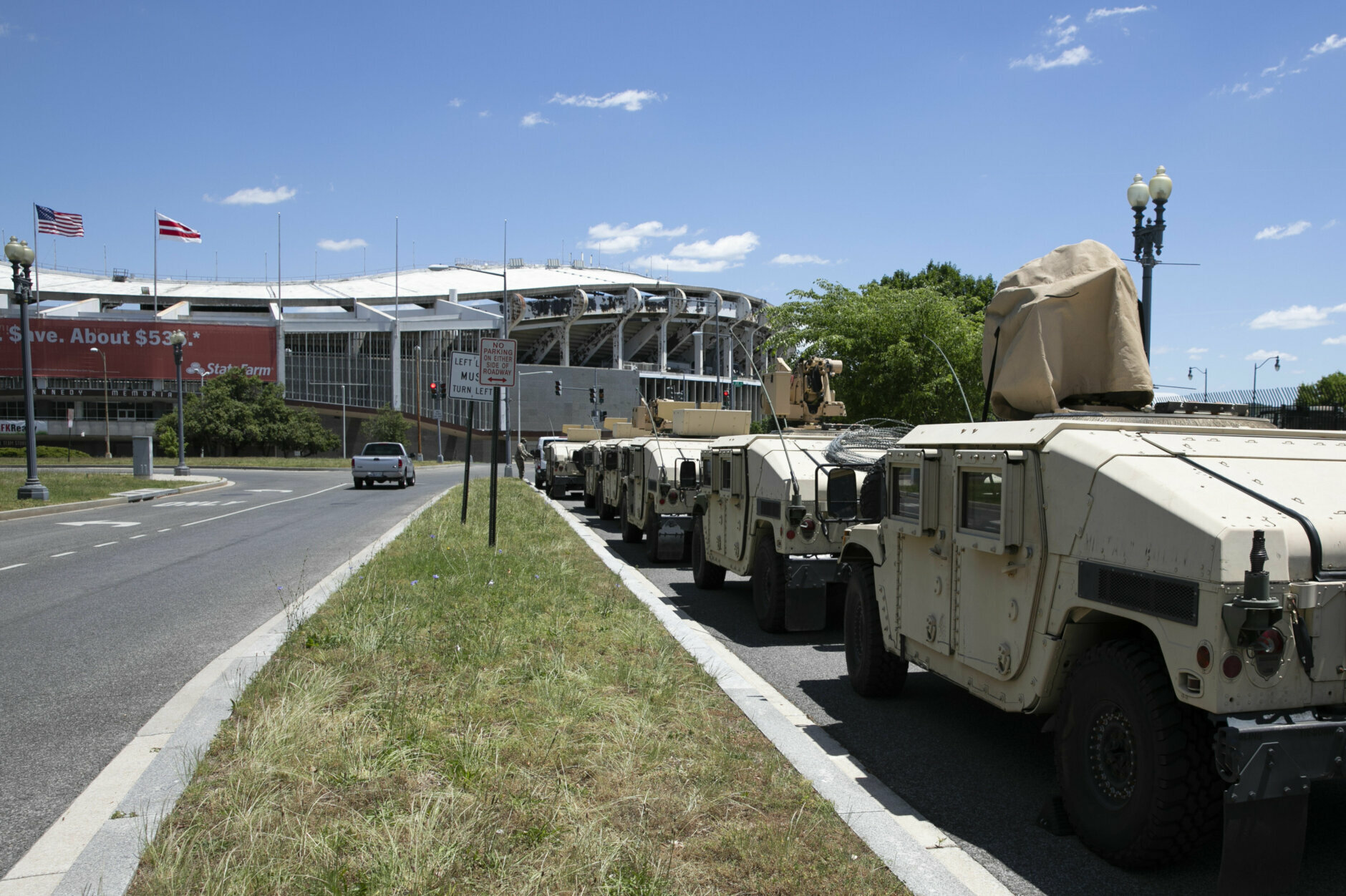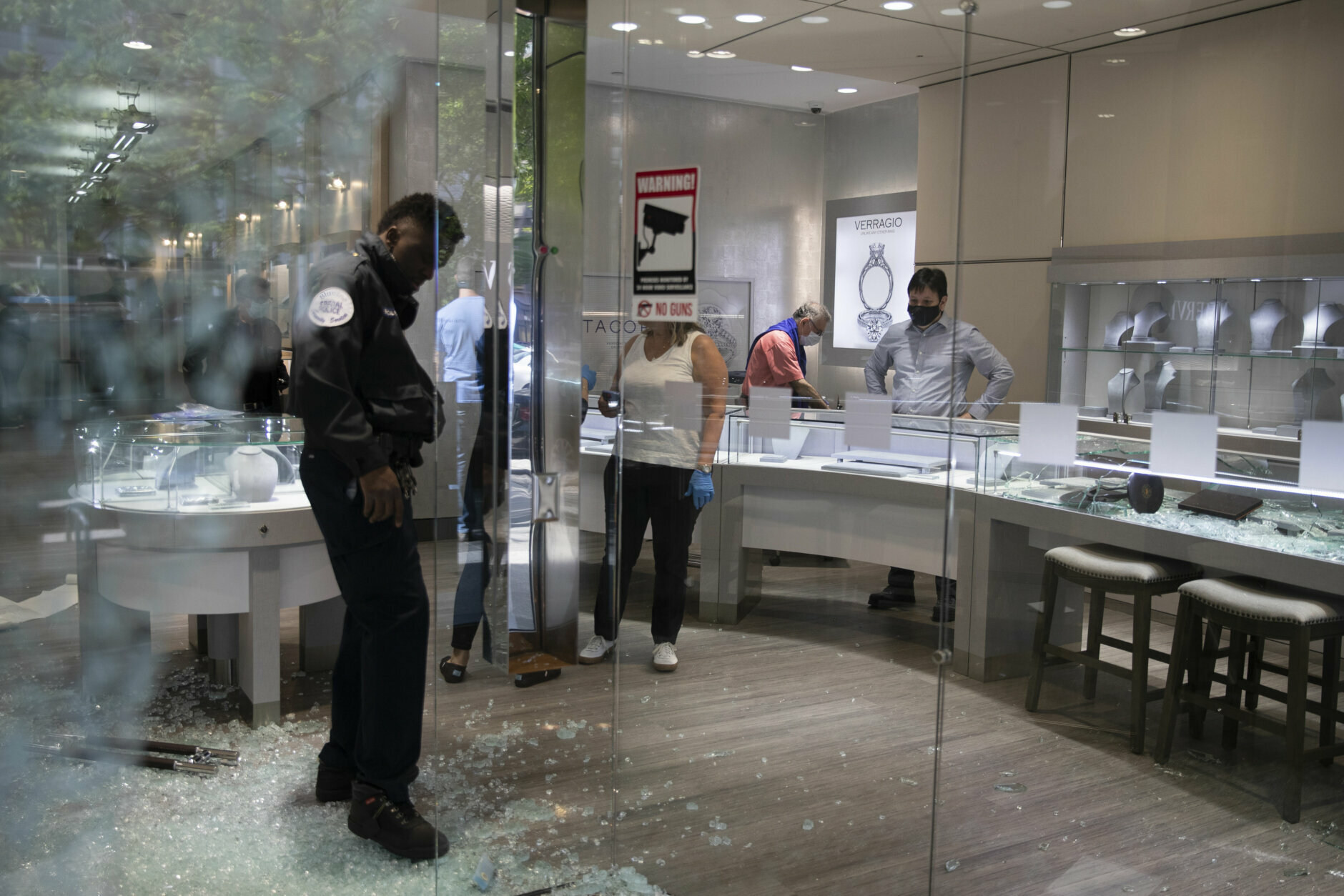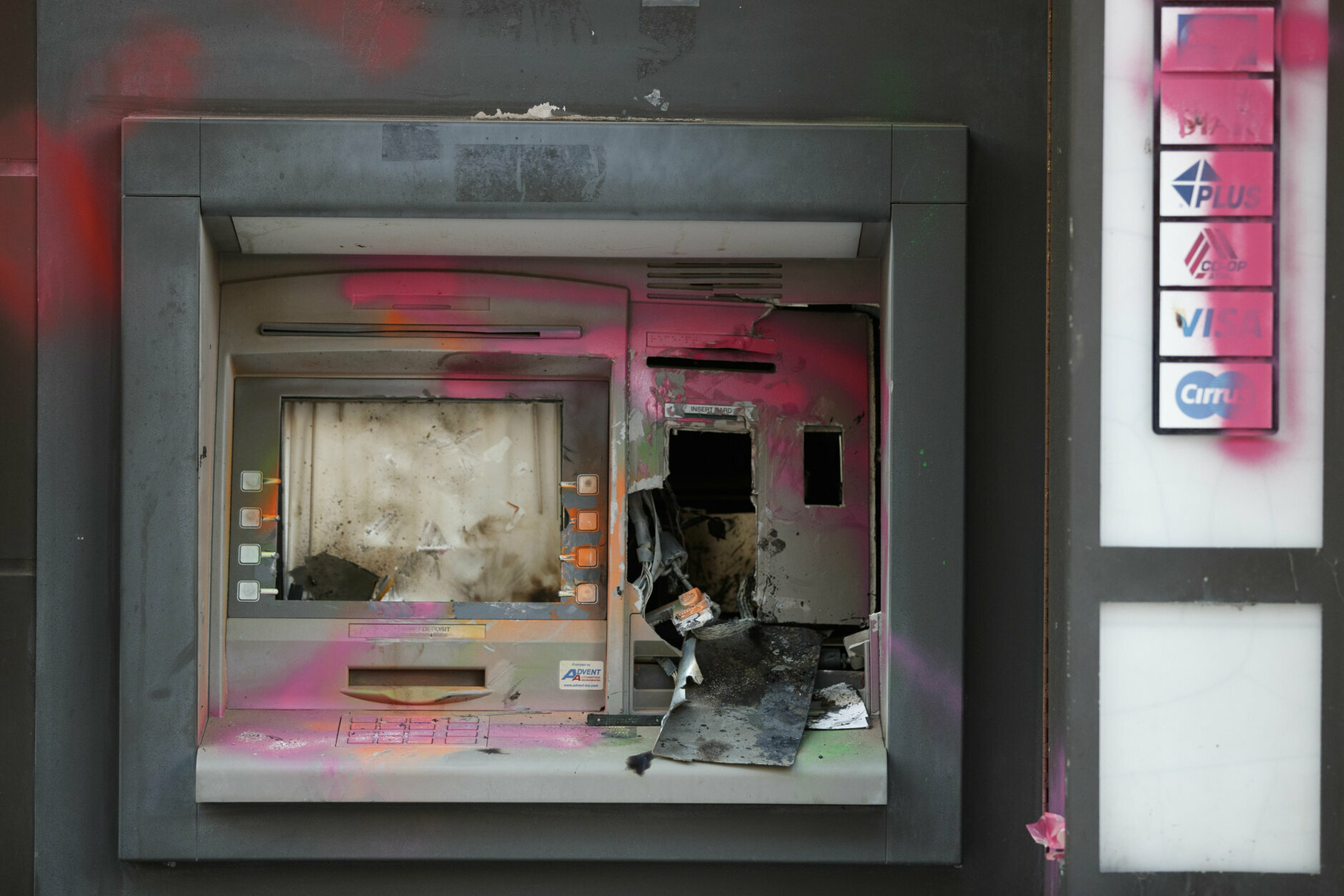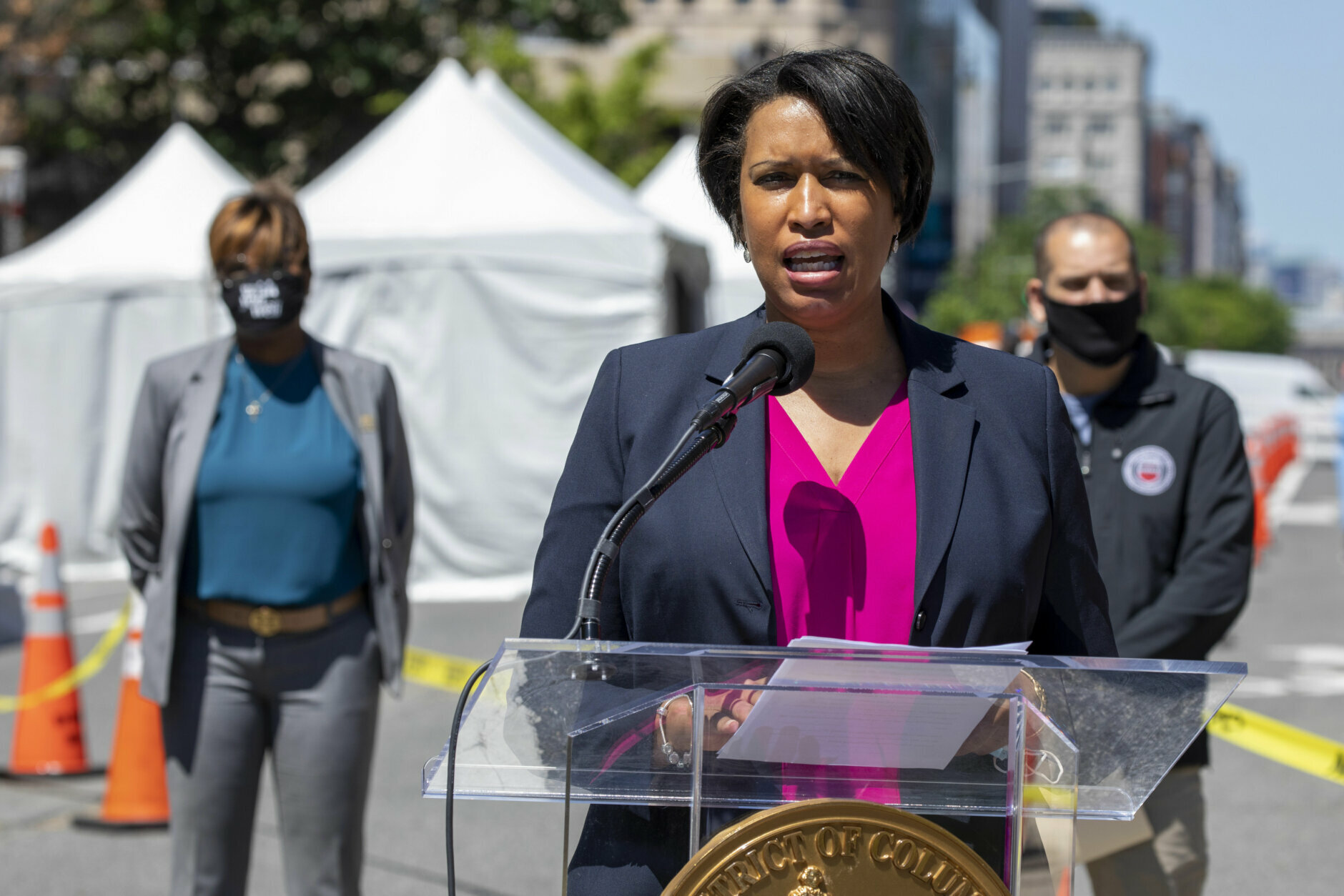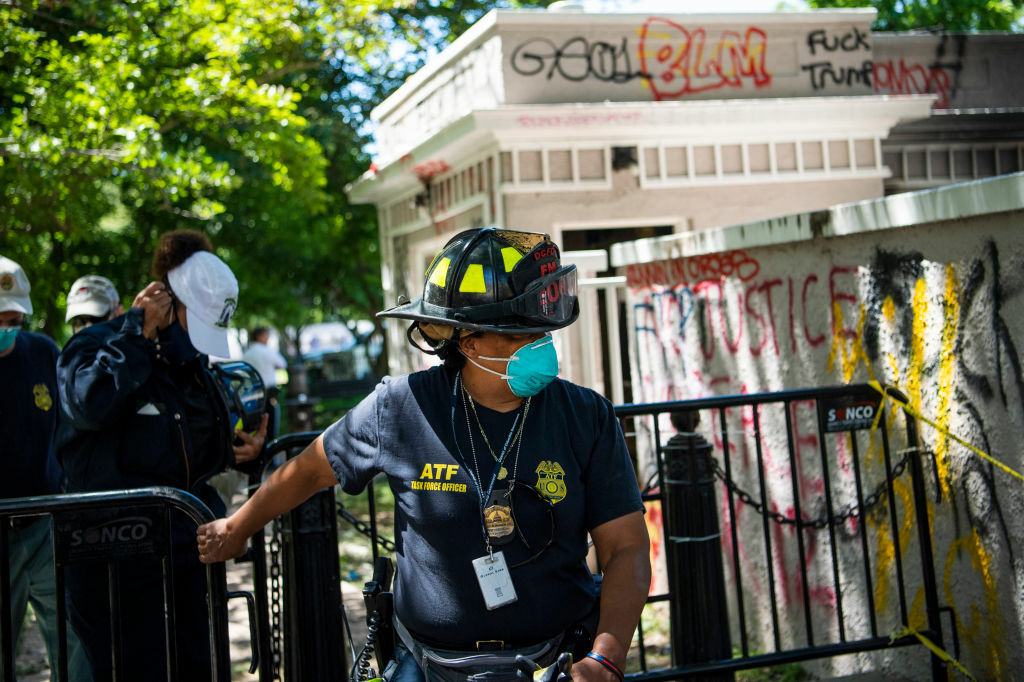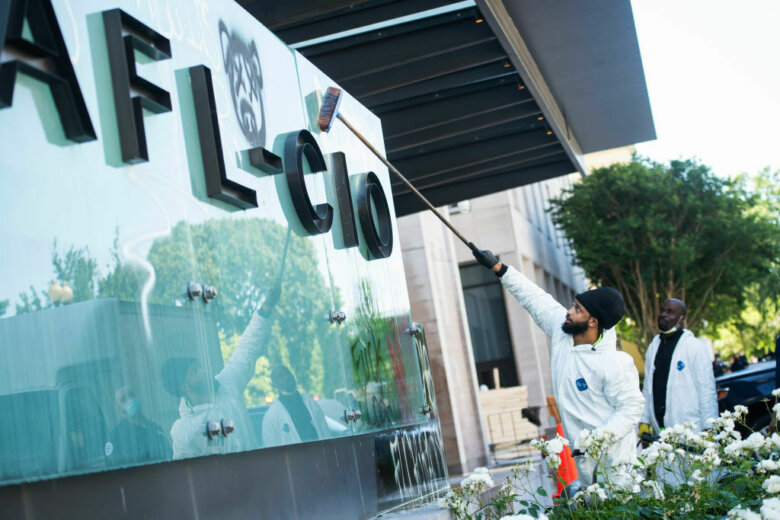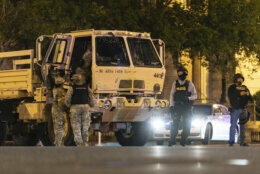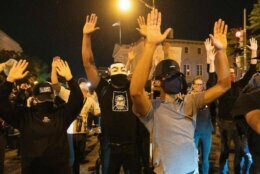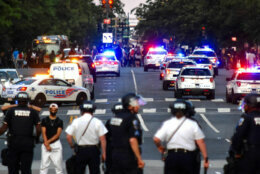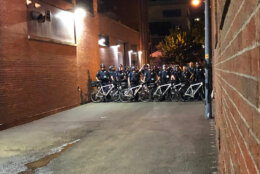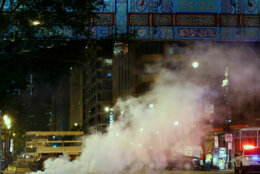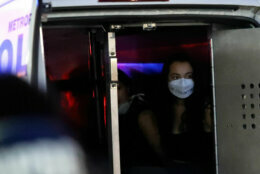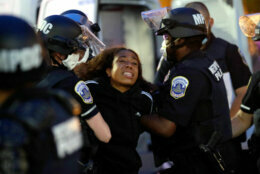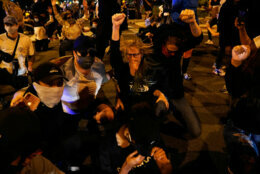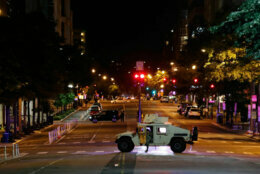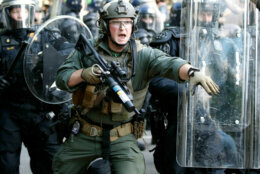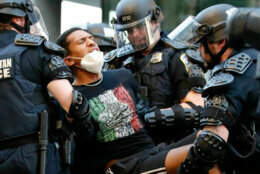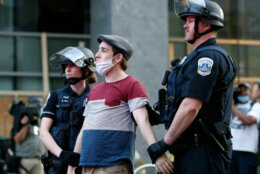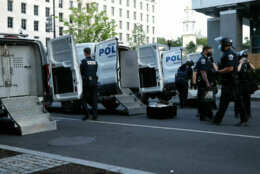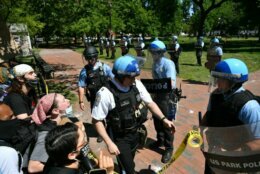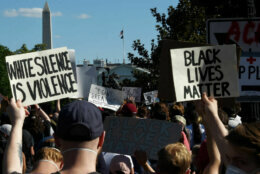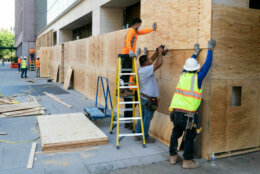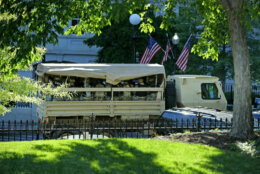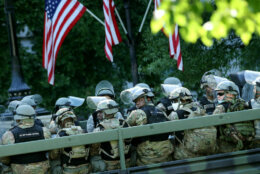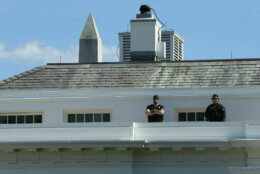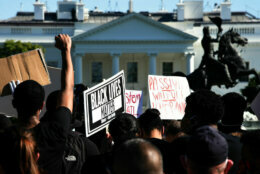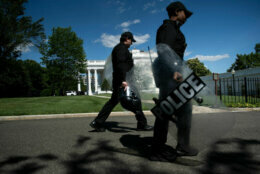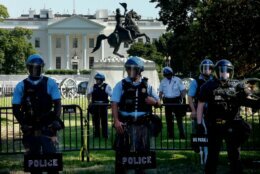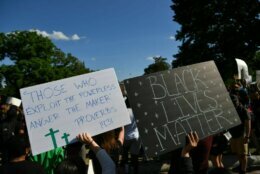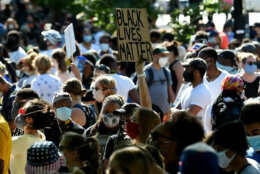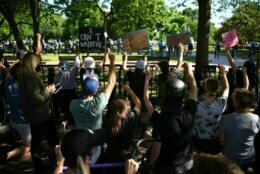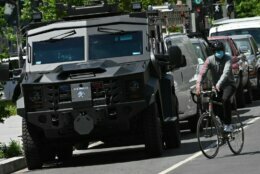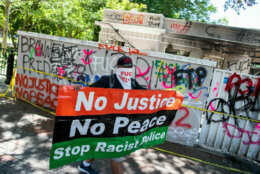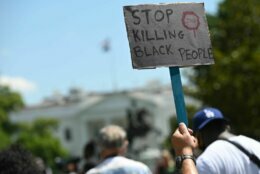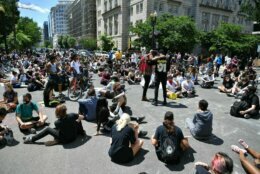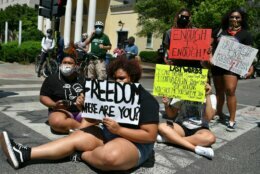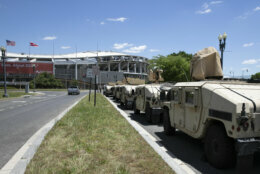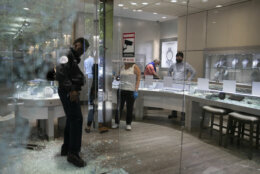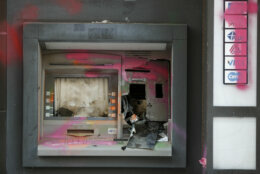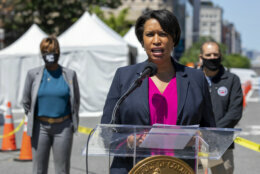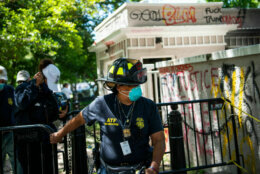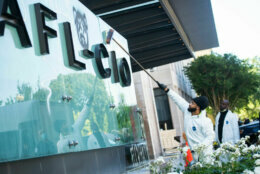
Lafayette Square, across the street from the White House, has been the local epicenter of the last five days of protests in the aftermath of George Floyd’s death in Minneapolis police custody last week.
The statue-dotted green space, just north of the White House, is usually filled with residents and tourists taking a break from work or from a long day of visiting monuments.
But on the evening of June 1, just as President Donald Trump was making a speech about authorities asserting themselves in the face of the Floyd-inspired protests around the country, a combination of shield-wielding police from federal agencies (Secret Service, Park Police, DC National Guard) and nearby Arlington, Virginia, began to push the assembled crowd back past the north side of the square, toward H Street NW and beyond.
The police action came about 15 minutes before the 7 p.m. curfew that D.C. Mayor Muriel Bowser had announced earlier Monday.
Both Bowser, D.C. police Chief Peter Newsham and the District’s Attorney General Karl Racine have criticized the action as premature and unwarranted, just a quarter of an hour before the curfew was to commence.
Racine’s Tuesday statement called it “an assault” on peaceful protesters. Bowser called it unprovoked and “shameful.”
Just after the crowd was pushed north, away from the Square, Trump emerged from the White House and walked one block to the historic St. John’s Episcopal Church to take photos with a Bible in his hand.

Twenty-four hours later, a number of questions persist about what prompted the police to advance on the protesters.
Who gave the order to push protesters away from Lafayette Square, and when was the order made?
Did police make any effort to warn protesters that they should move back?
Were the police provoked by the protesters?
Was tear gas or another irritant used to break up the crowd of protesters?
A day later, a number of official comments have been made on the issue, along with some non-comments, and the picture about what happened is not much clearer.
To start with the first question, a number of reports came out Tuesday that put the responsibility on U.S. Attorney General William Barr.
CBS News confirmed reporting from The Washington Post that Barr and his office made the decision either late Sunday (May 31) or early Monday to extend the perimeter around the White House. When he arrived in the area on Monday afternoon, he surveyed the square and was disappointed his request had not yet been carried out.
At that point, after talking with police, the move to expand the perimeter started. A Department of Justice official, who spoke with The Washington Post on the condition of anonymity, said “he [Barr] basically said: ‘This needs to be done. Get it done.'”
However, in a statement late Tuesday from the U.S. Park Police Acting Chief Gregory T. Monahan, there was no mention of this conference with Barr. Instead, the Park Police characterized protesters close to the park as being violent and throwing objects such as frozen water bottles and “caustic liquids,” which is what prompted three warnings to move back and an eventual push on the crowd.
WTOP’s reporter on the scene, Alejandro Alvarez, who posted video to Twitter showing Barr evaluating the situation at the north end of the square earlier in the afternoon, said he did not hear three requests from the police that protesters should move back away from the H Street side of the park.
There might have been warnings at Lafayette yesterday but they were so far or faint that not everyone heard them. From my vantage point the only hint police were about to charge was the national guard marching to the barricade minutes before it happened. pic.twitter.com/t8kHmEYqBZ
— Alejandro Alvarez (@aletweetsnews) June 2, 2020
By Tuesday, a larger perimeter around the White House had been created.
TRAFFIC ALERT: Roads around the White House are being closed to traffic until further notice.https://t.co/kketa0JhSG
— WTOP (@WTOP) June 2, 2020
According to a CBS News Justice Department source, Barr and his department made the decision to move the crowd back from the square regardless of Trump’s plan to walk to the church for photos.
But, CBS News also reported that Barr and other presidential advisers wanted Trump to make the walk in a “show of strength” after reports surfaced over the weekend that he had retreated into a White House bunker during Friday night’s protests.
Adding more detail to the events in the park Tuesday was Arlington County, which sent a release discussing its decision to recall officers it had detailed to D.C. to support the National Park Police. The county memo reinforced the assertion that “demonstrators were ordered to leave the area” about 10 minutes before the “redirection” began.
D.C. police Chief Newsham, in his discussion of Monday’s incident during a Tuesday news conference, also noted that “federal law enforcement officers” gave warnings to disperse.
The next question is, how did the police “redirect” the crowd? In its release, Arlington County noted its officers did not “unholster their batons, or fire rubber bullets or tear gas at the protesters.” (Note: Later Tuesday, Arlington amended its release to remove the reference to “batons.” Arlington County confirmed to WTOP that its officers did unholster batons.)
But, why were reports circulating that tear gas was used?
Abrupt and extraordinarily aggressive dispersal of protesters at H and 16th with Trump about to speak from the Rose Garden.
In a span of about 10 minutes they’ve unleashed everything from tear gas to flashbangs sending hundreds on a frantic retreat down 16th. pic.twitter.com/35H1BQjZTw
— Alejandro Alvarez (@aletweetsnews) June 1, 2020
Earlier Tuesday, WTOP’s Neal Augenstein tweeted that he had asked the Secret Service for some clarification “several times.”
Accdng to the USSS spks, “For operational security reasons, the US Secret Service does not discuss our protectees, our protective means and methods.”
— Neal Augenstein (@AugensteinWTOP) June 2, 2020
The response? “For operational security reasons, the US Secret Service does not discuss our protectees, our protective means and methods.”
Augenstein continued his reporting Tuesday afternoon, getting this response from Acting United States Park Police Chief Gregory T. Monhan.
NEW: Smoke canisters and pepper balls, but United States Park Police acting Chief Gregory T. Monahan says “No tear gas was used by USPP officers or other assisting law enforcement partners to close the area at Lafayette Park.”
— Neal Augenstein (@AugensteinWTOP) June 2, 2020
“No tear gas was used by USPP officers or other assisting law enforcement partners to close the area at Lafayette Park,” Monahan said via a release from the National Park Service.
As Arlington County’s release noted, its officers were attempting to move the crowd with “their presence” and not any irritants.
Why, then, did multiple reporters describe the irritant in the area a tear gas, and why was it deployed?
Deeper reporting reveals that protesters did begin to get arrested, throwing water bottles, rocks and other projectiles at the oncoming police.
“As many of the protesters became more combative, continued to throw projectiles, and attempted to grab officers’ weapons, officers then employed the use of smoke canisters and pepper balls.” Monahan’s statement also described “caches of glass bottles, baseball bats and metal poles hidden along the street.”
PepperBall is in fact a brand name touted on the company’s website as “your complete nonlethal solution.” The balls themselves resemble paint balls, and can be “launched” from different devices, most of which resemble weapons.
Promotional material calls PepperBalls “the most effective chemical irritant available” and can create a 12-foot cloud that can affect the eyes, nose and throat of those who are in the way.
A Google search shows that PepperBalls were recently used to break up a crowd at the University of Dayton in early May. News reports from that incident also note a confusion between the PepperBalls and tear gas.
Newsham noted in his news conference Tuesday that D.C. police was only made aware of Trump’s planned walk to the church moments before it happened, and even then, it was only called “presidential movement in the area” of Lafayette Square.
Reporters are still working to verify information provided by the authorities on Tuesday.
The Justice Department, according to CBS News, continues to refer all questions about the forceful tactics used Monday night to the agencies that carried them out.
Reporting from The Washington Post and WTOP’s Alvarez reveals that from what they could see, the demonstration had been peaceful before the police initiated the move just before 7 p.m.
WTOP’s Neal Augenstein, Alejandro Alvarez and CBS News contributed to this report.


